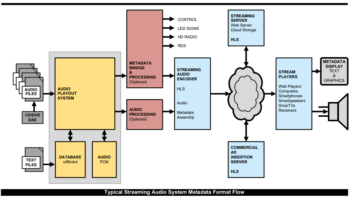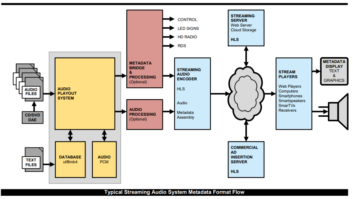The National Radio Systems Committee released a set of guidelines for radio broadcasters looking to implement MDCL technology for AM broadcast.
Modulation-dependent carrier level technology offers a way for AM broadcasters to reduce electrical power consumption with a minimum of impact on the quality of the audio signal received by listeners, as Radio World has reported.
“MDCL is important to AM broadcasters because it offers a means to save appreciable dollars on AC power consumption while having negligible effect on the perceived received signal,” said Milford Smith with Greater Media, the NRSC chairman. “These savings are particularly impressive for AM stations operating at higher power levels, at 10 kW or above.” Depending on the local cost of electricity, yearly savings can run into the tens of thousands of dollars, he said.
The guidelines were compiled and reviewed by the MDCL Working Group, a sub-group of the AM and FM Analog Broadcasting subcommittee of the NRSC, and reviewed at the NRSC’s January meeting before being released this month.
The report not only provides a history of MDCL technology and reviews the two main types of MDCL operation, but also offers an update on recent technical and regulatory developments in the United States, including the most recent decisions handed down by the Federal Communications Commission. In the October AM radio revitalization order, the FCC established that stations now have the go-ahead to commence operation using MDCL control technology without prior FCC authority, provided that they electronically notify the Media Bureau within 10 days of commencing MDCL control operation.
The guidelines also offer descriptions of current MDCL-capable transmitting equipment as well as recommendations for implementation.
This usage guideline document is targeted toward engineers charged with implanting the technology in real-world scenarios, and should prove invaluable to those working with MDCL technology for the first time or for those MDCL veterans looking for a refresher, Smith said.
Specifically, the report details the two main MDCL algorithms and provides detailed charts on carrier and modulation compression levels, specific examples of different compresssion functions as well as power savings comparisons that stations can expect to see. As the report details, the first category consists of a single system, Amplitude Modulation Companding (AMC), for which both the carrier level and the sideband level are dynamically reduced together; in the second category, Dynamic Carrier Systems (DCS), only the carrier is dynamically reduced and the sideband power remains constant at the normal AM level.
The NRSC report also details a series of laboratory tests that were recently conducted in conjunction with National Public Radio Labs to determine the effect of MDCL on hybrid AM IBOC transmissions.
The NRSC notes that, to date, all public reports from these users of MDCL have been favorable and have cited significant electrical power savings.
The full report can be found on the NRSC website. The NRSC is a standards-setting body for technical aspects of terrestrial over-the-air radio broadcasting systems in the United States, jointly sponsored by the Consumer Electronics Association and the National Association of Broadcasters.
Related:












